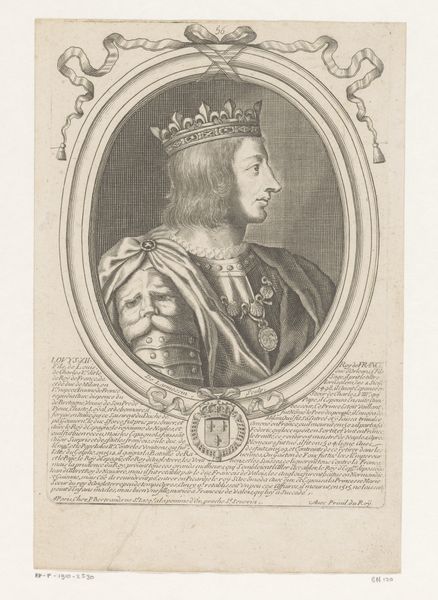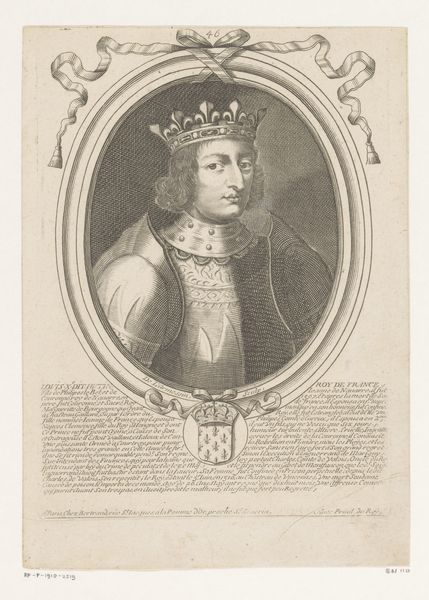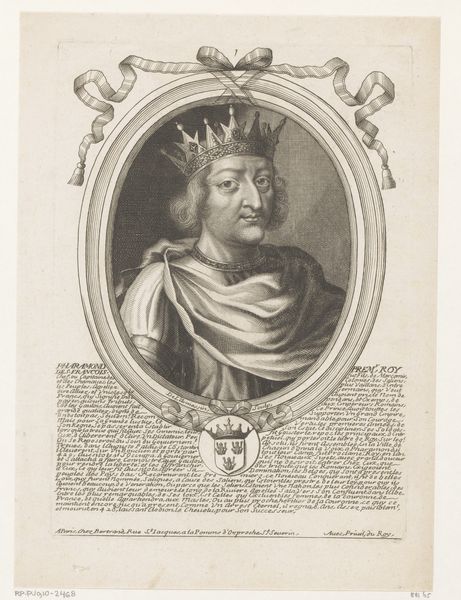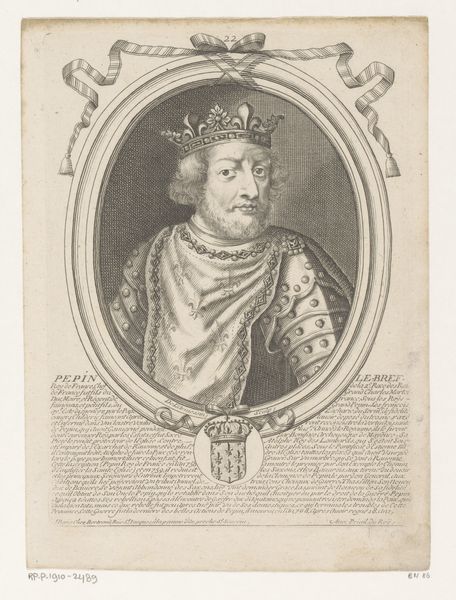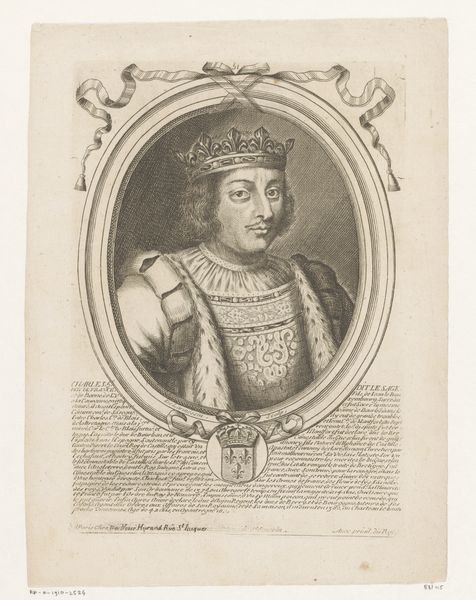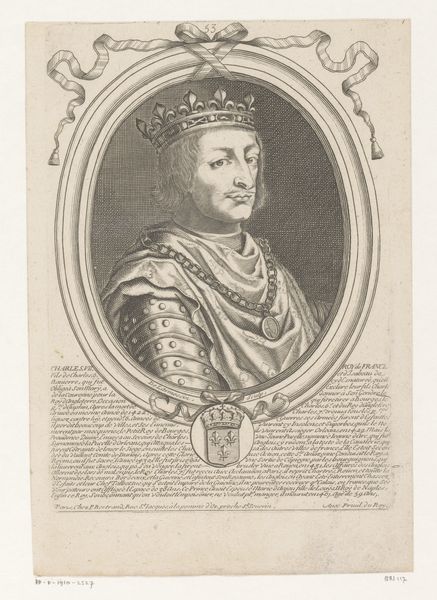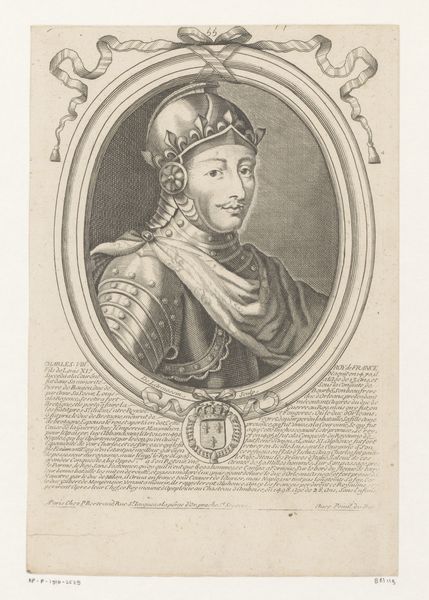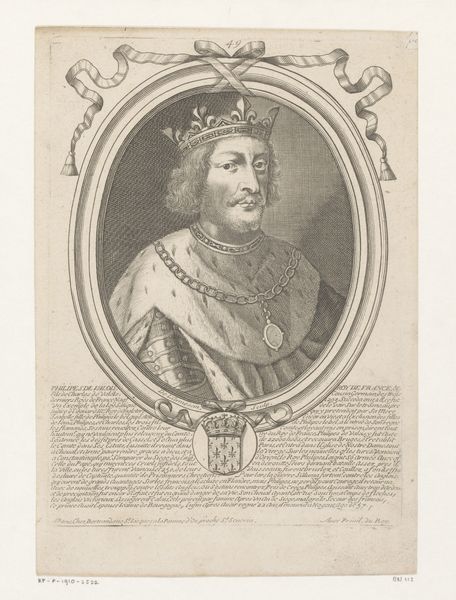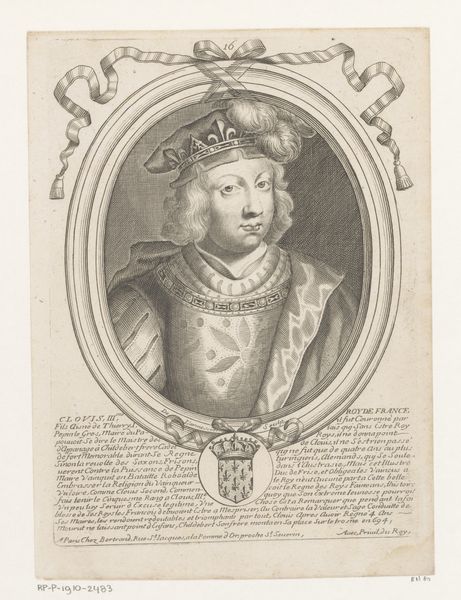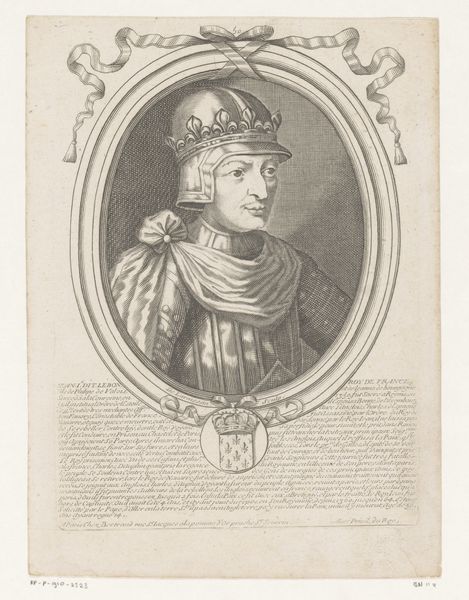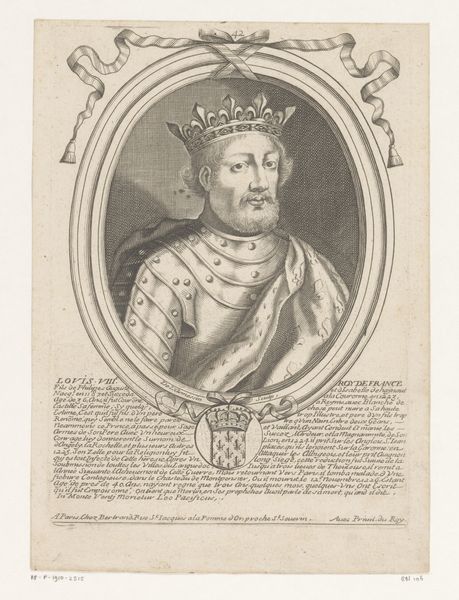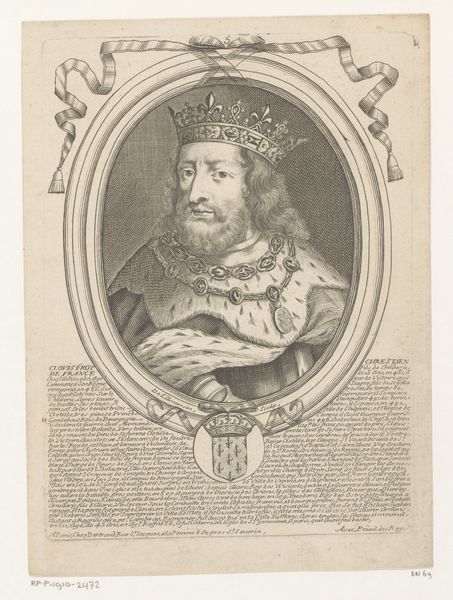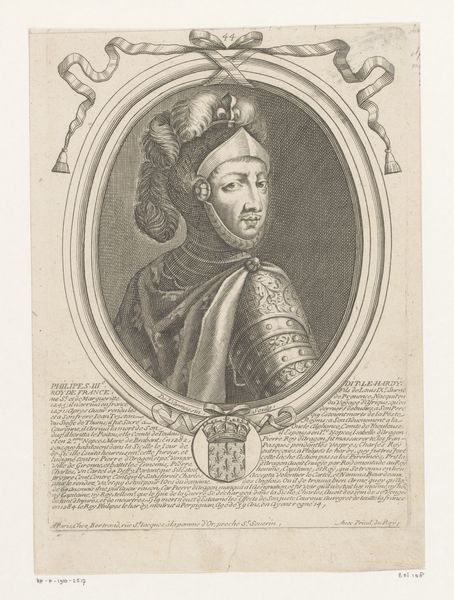
Portret van Lodewijk IX de Heilige, koning van Frankrijk 1642 - 1678
0:00
0:00
nicolasdeilarmessin
Rijksmuseum
print, engraving
#
baroque
# print
#
old engraving style
#
history-painting
#
engraving
#
realism
Dimensions: height 234 mm, width 166 mm
Copyright: Rijks Museum: Open Domain
Editor: Here we have Nicolas de Larmessin's "Portrait of Louis IX, the Holy King of France," an engraving dating back to somewhere between 1642 and 1678. It's an imposing image. What really strikes me is the contrast between the intricate detail of the king’s armor and the relative simplicity of his face. What stands out to you? Curator: Focusing on the formal elements, observe how the oval frame and ribbon create a contained space, drawing the eye inward. The use of line is particularly interesting. Notice how densely packed lines build up texture and shadow in the armor, creating a strong contrast with the smoother rendering of the face, directing our gaze to his expression. It's all about controlling the viewers gaze, isn’t it? Editor: That’s a great point about the lines guiding the eye. What about the inscription below the portrait? Does that change how we perceive the visual elements? Curator: Not necessarily change, but add another layer. Visually, it anchors the composition, providing a base upon which the portrait rests. Consider the relationship between the textual details and the visual. Do they complement each other, or create tension? How does the density of the text interact with the relative openness of the portrait? Editor: It’s interesting to think of the text as another structural component. It’s almost like it balances the visual weight of the portrait within the overall composition of the print. I wouldn't have considered it that way initially! Curator: Indeed. Thinking about the visual rhetoric - how the artist directs our attention through these considered contrasts of line, texture, and textual density allows us a richer appreciation for the print’s formal construction.
Comments
No comments
Be the first to comment and join the conversation on the ultimate creative platform.
